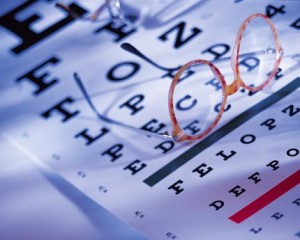Oh, Now I See!
 “I was seldom able to see an opportunity until it had ceased to be one.” Mark Twain.
“I was seldom able to see an opportunity until it had ceased to be one.” Mark Twain.
“Oh, now I see!” It’s a phrase we use so often to convey that we understand, or get it. We use sight as a metaphor for understanding all the time. The word lens is used to mean a channel through which something can be seen or understood. “Mary sees the world through rose colored lenses,” (an optimist, or naive). We are creatures of pattern recognition and our conjuring process requires imagery to put things in place, or to make sense of what we experience or think. We will typically apply what we know (our storehouse of imagery) to what we see and work hard to make sense of things.
Lenses matter and the choice of lenses have interesting effects on what follows. We believe that lenses allow us to see better, and that is true, but for a very limited and specific range of stuff. The lens is helpful in that it blocks out an infinite number of things we could see or consider so that we get clarity and detail on what the lens puts into focus for us. I’ve looked through telescopes and microscopes, sunglasses and readers, wide angle lenses and telephoto ,,,, all bringing into focus different stuff and making me oblivious to everything else around me. If driving fast, I do no longer see what was in front of me seconds before. Nor should I, be looking anywhere but where it’s critical when driving. Texting while driving is illegal in some states, thank goodness.
In our enterprises, we make choices about lenses all the time. We don’t call them lenses, even though they affect what we see and subsequently interpret. If our lenses are the wrong ones, then we’ll just have to deal with interpreting what we see and worry about what we don’t see. If our lenses cover too much to absorb at once, because we’re driving the business so fast, then we’ll just to trust our luck that we did not miss an important turn-off or on-ramp. If our business roadways are all smooth and devoid of danger or speed traps, then it doesn’t matter so much. If the scenery doesn’t change or we’re not trying to take our enterprise anywhere new, then all is good.
Among our most important lenses are what we measure, how well we measure, how often we measure, and what we do with what we measure. They are important if we do actually do something of value with what we measure in time to make a difference. It does us little good to find out that we missed a turn-off two weeks or a month ago, unless we’re pretty good at u-turns and restarts, except when opportunities don’t wait around for us to u-turn. Also, who decides what to measure, or who interprets what we measure, or who decides what to do with what we measure, or who reports what we measure, or doesn’t report what we measure is likely to matter a whole bunch too.
When we go for our annual physical, all the same measurement stuff applies, and we surely hope the doctor and the lab get it right. I lost a cousin to cancer this weekend because a doctor and a lab got the measurements wrong years ago when they could have done something in time to save Bob’s life.
So, when was the last time you checked the lenses you use at work, home, or play?
“There are three classes of people; those who see, those who see when they are shown, and those who do not see.” Leonardo da Vinci.

